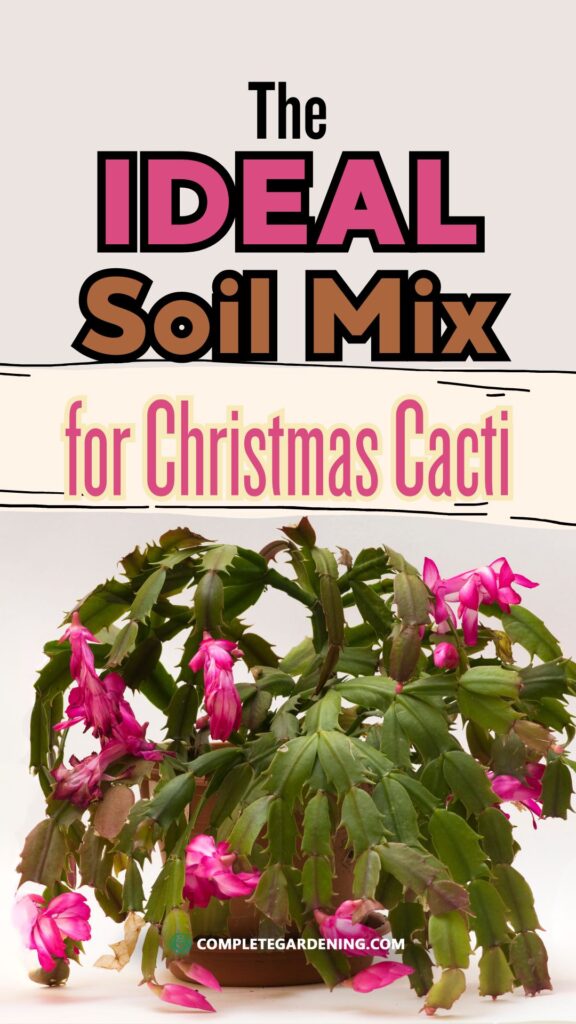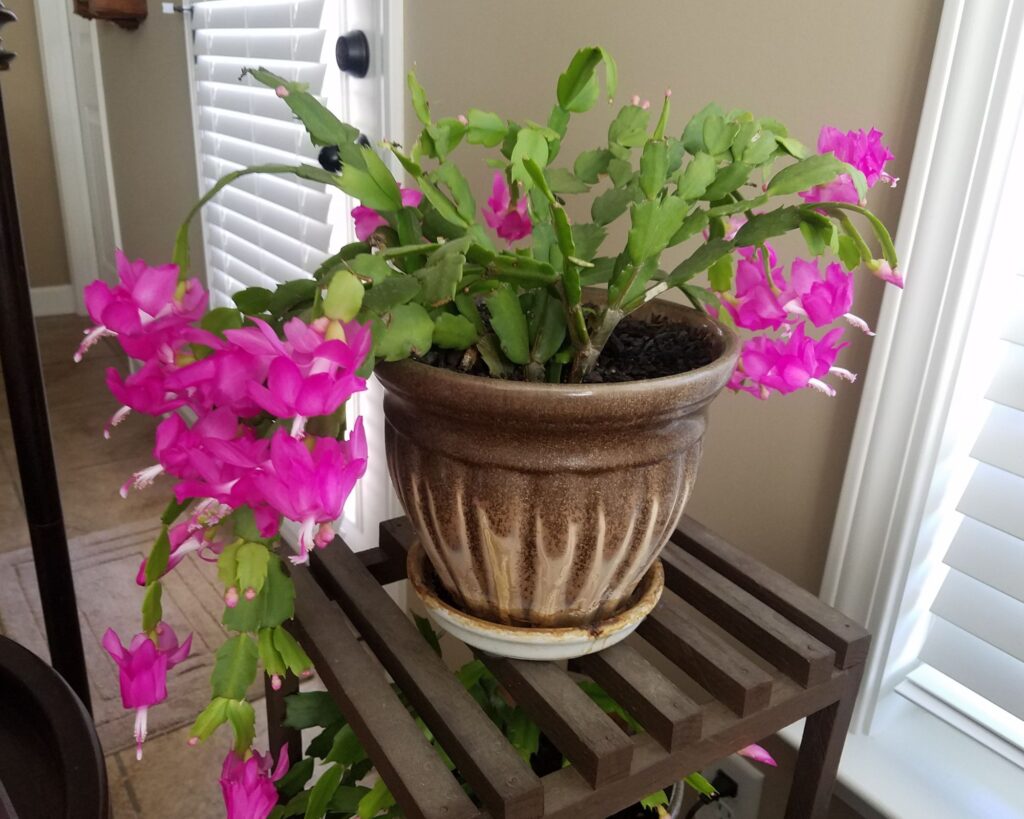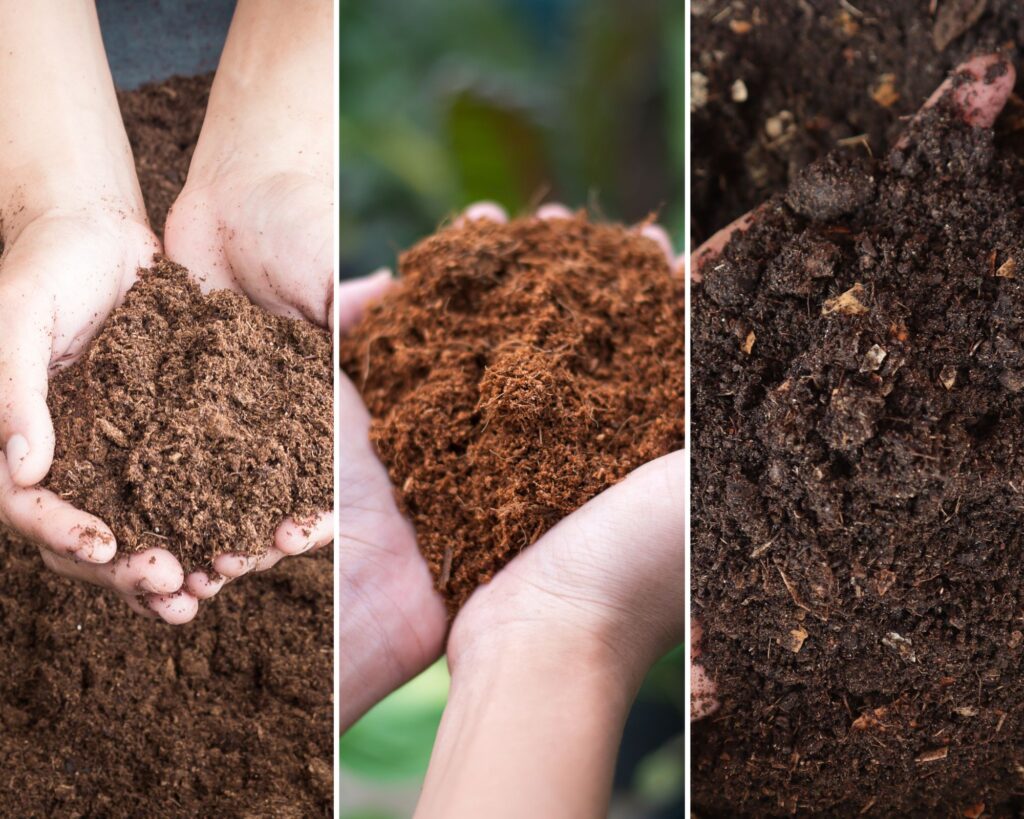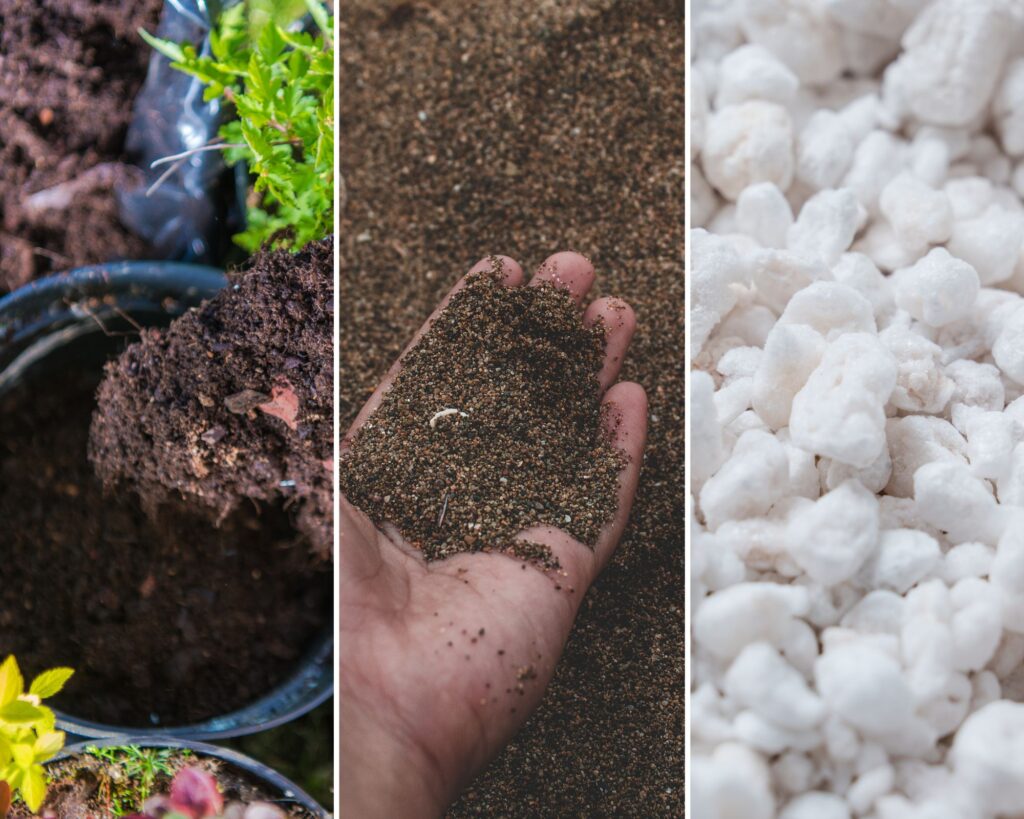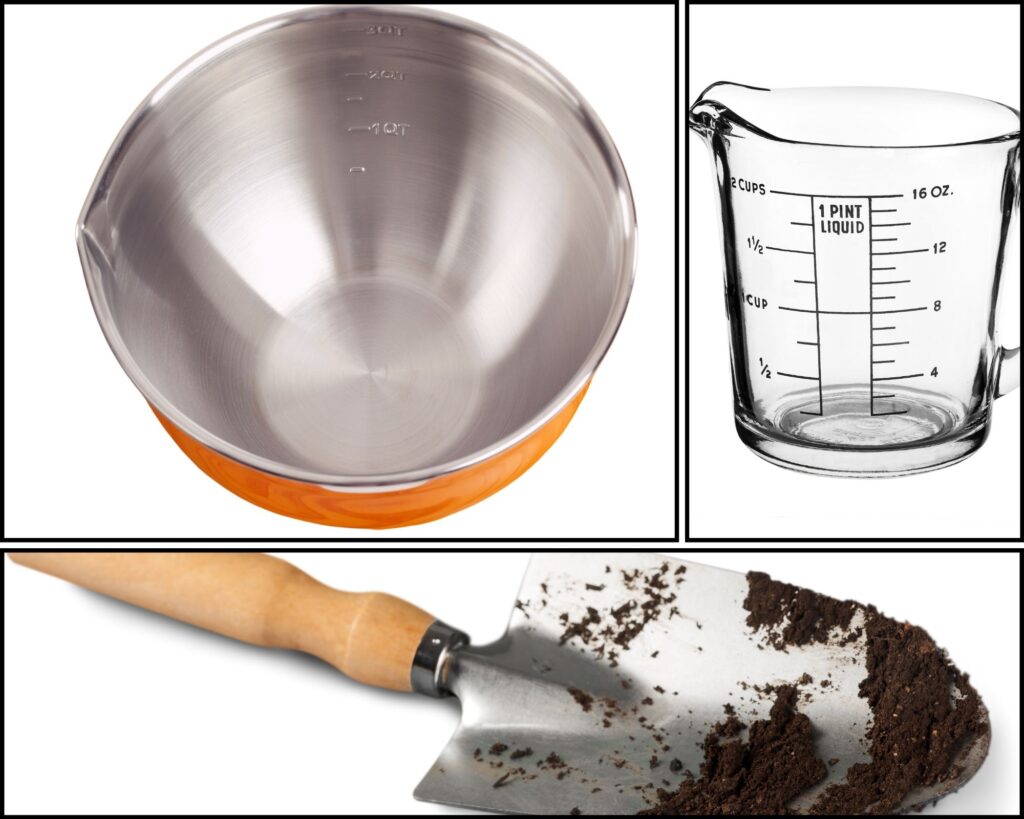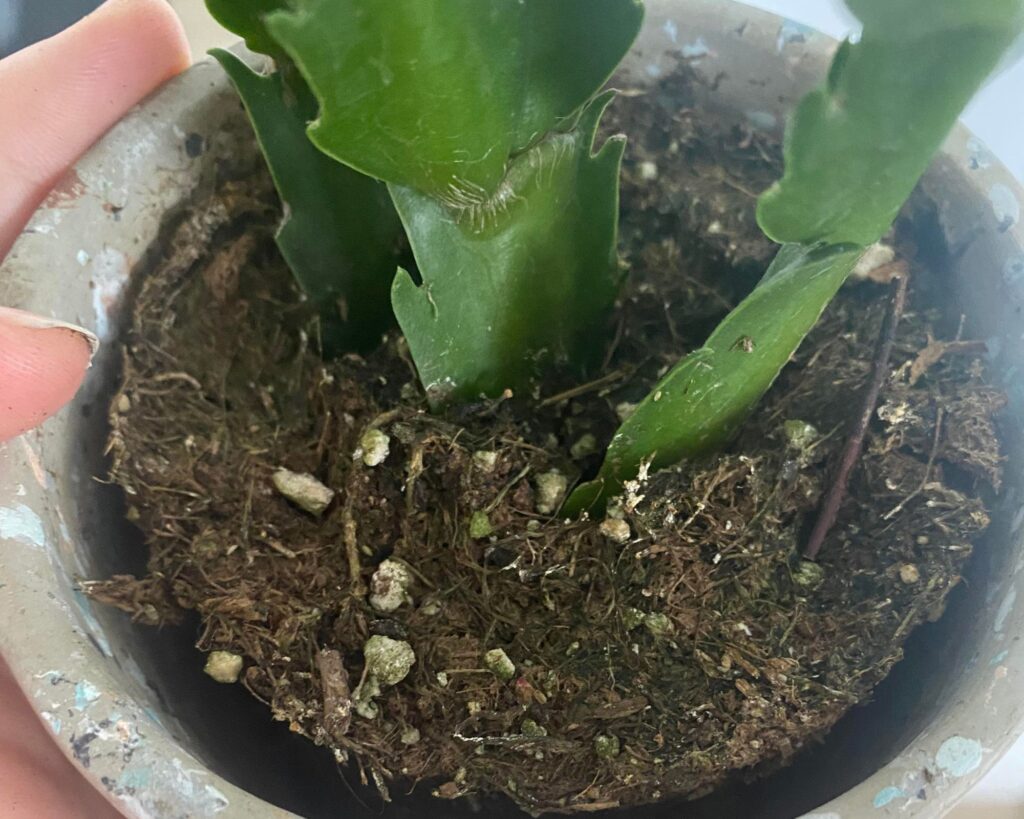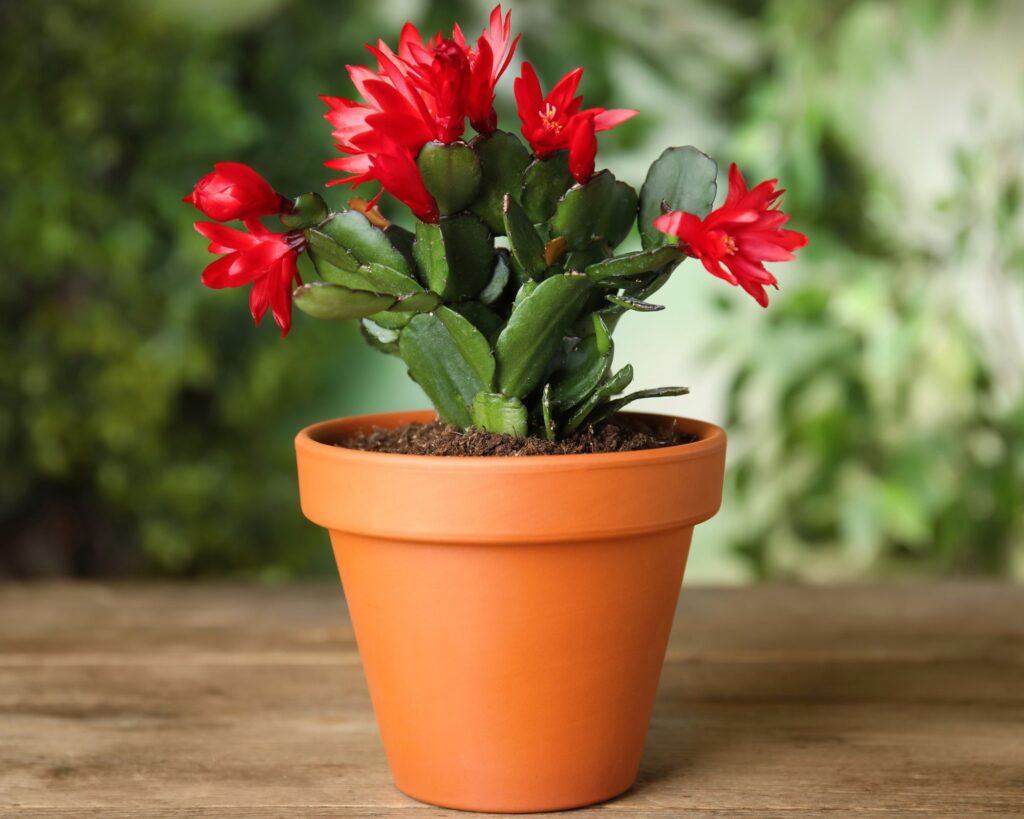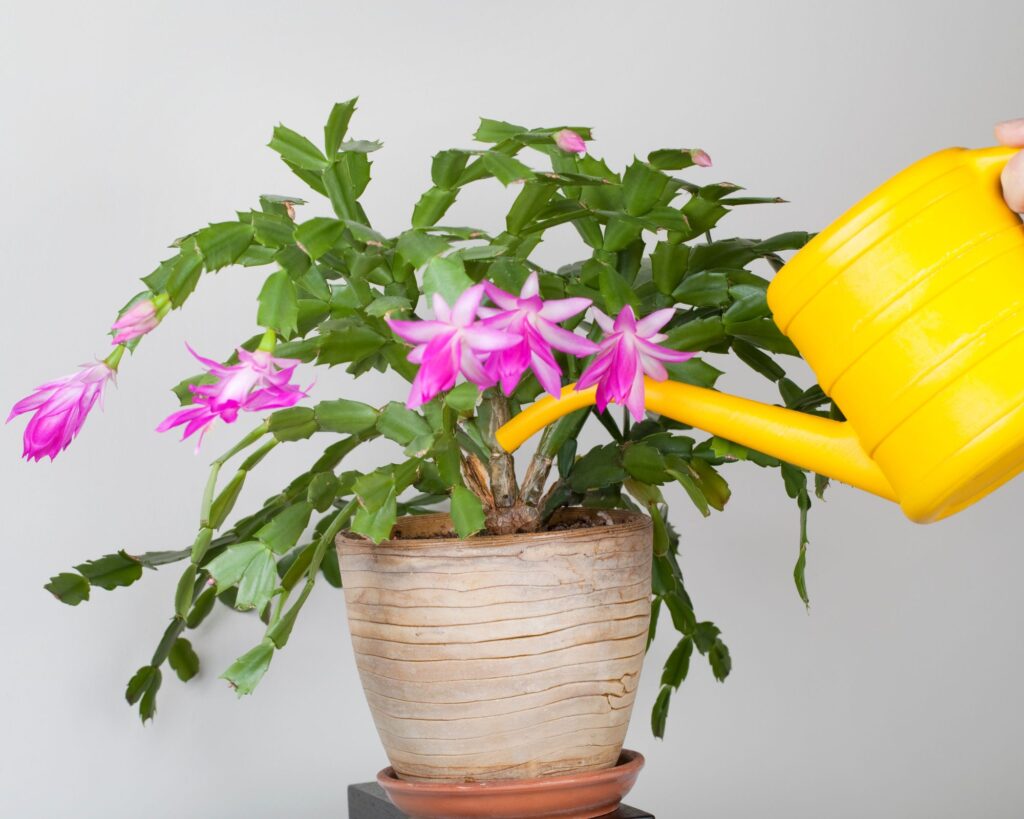Finding the perfect soil mix for your Christmas cactus is more than just a task—it’s the key to transforming your home into a holiday wonderland.
Imagine a soil blend that not only supports healthy roots but also enhances every vibrant bloom, creating a spectacle of color that brightens up your festivities. With a careful balance of peat moss, perlite, and orchid bark, this mix doesn’t just nurture—it revolutionizes how your Christmas cacti flourish.
Delve into our guide and unlock the secrets to cultivating the ideal soil that promises to elevate your plant’s growth and bring joy to your holiday season.
Understanding Christmas Cacti Requirements
For Christmas cacti to thrive, you need to focus on providing the right light conditions and maintaining optimal temperatures.
Light and Temperature
Christmas cacti prefer bright, indirect light. Direct sunlight can scorch their leaves, so placing them near a north or east-facing window is ideal. If you only have south or west-facing windows, use sheer curtains to filter the light.
In terms of temperature, Christmas cacti thrive in daytime temperatures between 70°F and 80°F (21°C-27°C) and slightly cooler nighttime temperatures around 60°F to 65°F (16°C-18°C). Avoid extreme temperature fluctuations, as this can stress the plants. Consistent temperature and light help Christmas cacti develop vibrant blooms.
Components of a Perfect Christmas Cactus Soil Mix
Creating the ideal soil mix for your Christmas cactus involves the right blend of organic matter, drainage aids, and balanced soil pH and nutrients.
Organic Matter
Organic matter is essential for providing nutrients and retaining moisture, which is vital for Christmas cacti. You can include ingredients like peat moss, coconut coir, and compost.
Peat moss enhances moisture retention and loosens soil. Coconut coir is a sustainable alternative to peat moss, offering excellent water retention and improved aeration for the roots. Compost supplies vital nutrients and beneficial microorganisms that boost plant growth.
Drainage Aids
Good drainage is crucial to prevent waterlogged soil and root rot in Christmas cacti. Essential drainage aids include perlite, coarse sand, and pumice.
Perlite is a lightweight volcanic rock that keeps soil aerated and ensures excess water can flow out. Coarse sand is heavy and coarse, improving soil structure by increasing drainage. Pumice, another volcanic rock, serves a similar purpose and is rich in trace minerals beneficial for plant health.
Soil pH and Nutrients
Maintaining the right soil pH and nutrient levels is essential for growth. Christmas cacti prefer slightly acidic soil, with a pH between 5.5 and 6.2.
It’s important to test your soil pH and adjust with materials like lime to raise pH or sulfur to lower it. Balanced fertilizers with a higher phosphorus content (for blooming) and micronutrients like iron, magnesium, and zinc will support robust growth. Always avoid using fertilizers with high nitrogen content, as it promotes leafy growth rather than flowers.
Mixing Your Own Christmas Cactus Soil
Creating the ideal soil mixture for your Christmas Cactus involves finding the right recipe and having the proper tools to mix it effectively.
Recipe and Ratios
The best soil for Christmas Cacti mimics their natural habitat. A balanced mix includes potting soil, sand, and perlite. Here’s a simple recipe:
| Ingredient | Ratio |
|---|---|
| Potting Soil | 2 parts |
| Sand | 1 part |
| Perlite | 1 part |
Potting soil provides the organic material and nutrients. Sand improves drainage while perlite ensures the soil stays airy. Adjust as needed based on your climate. Drier climates may need more organic material to retain moisture.
Tools and Techniques
Proper tools make mixing easier and more efficient. You’ll need:
- A large mixing container
- Measuring cups or a small shovel for consistent ratios
- A garden trowel for blending
Start by adding your base potting soil to the mixing container. Next, incorporate sand and perlite in the correct proportions. Thoroughly mix until all components are well integrated. If the mix feels too dense, add more perlite; if too loose, a bit more potting soil can help.
Use gloves to protect your hands, especially if you’re using commercial potting soils that might contain fertilizers. This ensures the best possible environment for your Christmas Cactus to thrive.
Repotting Your Christmas Cactus
Repotting your Christmas cactus is crucial for maintaining its health and growth. This process involves choosing the right time and following specific steps for the best results.
When to Repot
Your Christmas cactus typically needs repotting every 2-3 years. The best time to do this is in late winter or early spring, right after the blooming period. Look for signs such as roots growing through the drainage holes or if the plant appears too heavy for its pot.
If your cactus seems to dry out quickly or seems root-bound, these are other indicators that repotting may be necessary. Repotting at the right time ensures that your plant has ample space for new growth and adequate nutrient absorption.
Steps for Repotting
- Prepare the new pot and soil mix: Choose a pot that’s one size larger than the current one. Prepare a well-draining soil mix, ideally a blend of potting soil, sand, and perlite.
- Remove the cactus: Gently remove your cactus from its current pot. Tap the pot or use a butter knife to loosen the soil and roots if needed.
- Trim the roots: If the roots are tangled or excessively long, trim them slightly with sterilized scissors. This encourages healthier growth.
- Place in the new pot: Add a layer of soil mix to the bottom of the new pot. Position your cactus in the center, then fill around it with additional soil mix. Ensure the base of the plant sits at the same level as it did in the old pot.
- Watering and care: After repotting, water the cactus lightly to settle the soil. Avoid overwatering and let the soil dry out slightly before the next watering. Keep the cactus in a shaded area for a few days to help it adjust before returning it to its usual spot.
By following these steps, you can ensure a smooth transition and continued growth for your Christmas cactus.
Maintaining Ideal Soil Conditions
Caring for your Christmas Cactus involves two main practices — watering and fertilizing. Both require specific techniques to ensure your plant flourishes.
Watering Practices
Maintaining the right moisture level is critical for a thriving Christmas Cactus. Water deeply but infrequently, ensuring the soil is completely saturated. Let the soil dry out to about 1-2 inches in depth before the next watering.
During blooming season (typically in winter), be more attentive, avoiding both underwatering and overwatering. Use room temperature water to prevent shocking the roots. Remember, chlorinated water can be harmful, so opting for distilled or rainwater is best.
Fertilization Schedule
Fertilizing supplies essential nutrients for growth and blooms. Use a balanced liquid fertilizer twice a month during the growing seasons (spring and summer). A 20-20-20 or 10-10-10 formula is ideal. During the fall, reduce feeding to once a month, and halt in winter when the plant is blooming.
Opt for diluted solutions to avoid root burn. Always follow the recommendations on the fertilizer packaging. Regular feeding encourages robust growth and abundant flowers.
The journey to finding and maintaining the perfect soil mix for your Christmas cactus is a rewarding endeavor that results in vibrant, healthy plants that can be the centerpiece of your holiday décor.
With the right mix, care, and attention, your Christmas cactus will flourish, bringing beauty and joy to your home throughout the holiday season and beyond.

